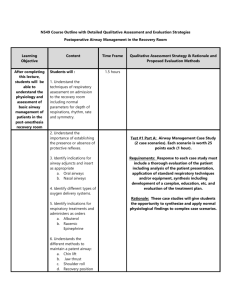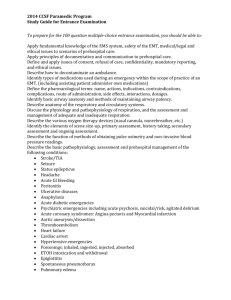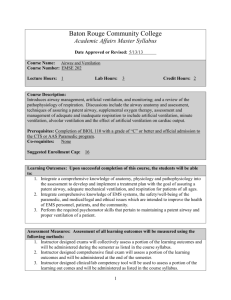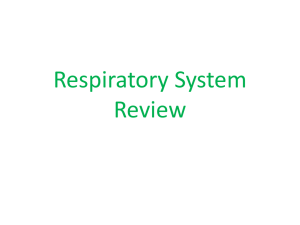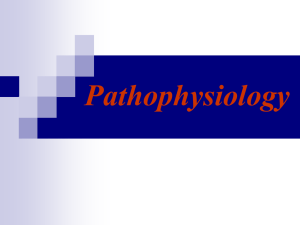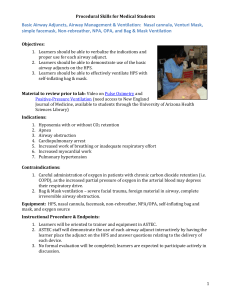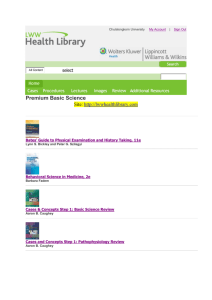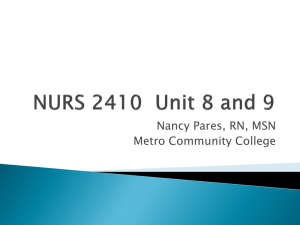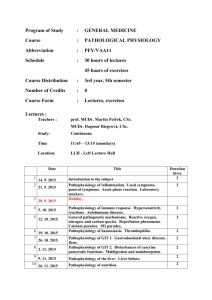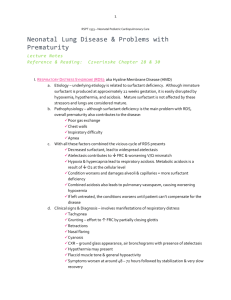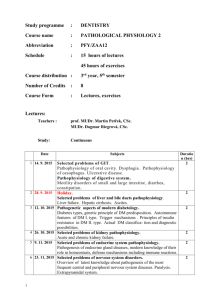abstract Syllabus Carroll Community College DIVISION OF
advertisement
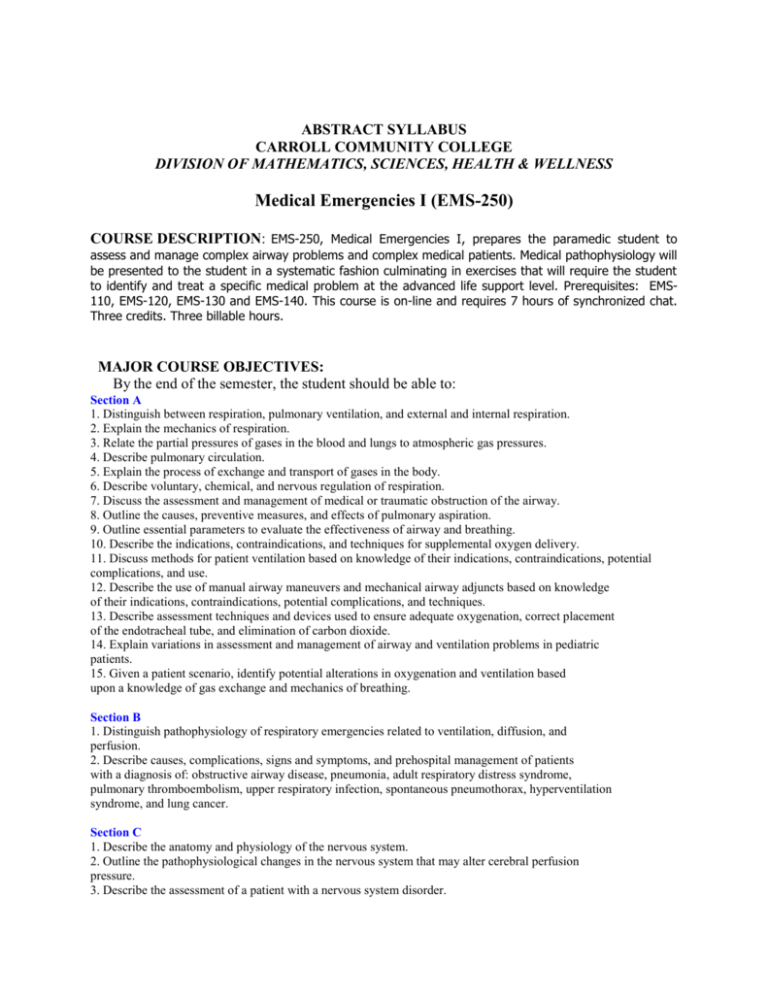
ABSTRACT SYLLABUS CARROLL COMMUNITY COLLEGE DIVISION OF MATHEMATICS, SCIENCES, HEALTH & WELLNESS Medical Emergencies I (EMS-250) COURSE DESCRIPTION: EMS-250, Medical Emergencies I, prepares the paramedic student to assess and manage complex airway problems and complex medical patients. Medical pathophysiology will be presented to the student in a systematic fashion culminating in exercises that will require the student to identify and treat a specific medical problem at the advanced life support level. Prerequisites: EMS110, EMS-120, EMS-130 and EMS-140. This course is on-line and requires 7 hours of synchronized chat. Three credits. Three billable hours. MAJOR COURSE OBJECTIVES: By the end of the semester, the student should be able to: Section A 1. Distinguish between respiration, pulmonary ventilation, and external and internal respiration. 2. Explain the mechanics of respiration. 3. Relate the partial pressures of gases in the blood and lungs to atmospheric gas pressures. 4. Describe pulmonary circulation. 5. Explain the process of exchange and transport of gases in the body. 6. Describe voluntary, chemical, and nervous regulation of respiration. 7. Discuss the assessment and management of medical or traumatic obstruction of the airway. 8. Outline the causes, preventive measures, and effects of pulmonary aspiration. 9. Outline essential parameters to evaluate the effectiveness of airway and breathing. 10. Describe the indications, contraindications, and techniques for supplemental oxygen delivery. 11. Discuss methods for patient ventilation based on knowledge of their indications, contraindications, potential complications, and use. 12. Describe the use of manual airway maneuvers and mechanical airway adjuncts based on knowledge of their indications, contraindications, potential complications, and techniques. 13. Describe assessment techniques and devices used to ensure adequate oxygenation, correct placement of the endotracheal tube, and elimination of carbon dioxide. 14. Explain variations in assessment and management of airway and ventilation problems in pediatric patients. 15. Given a patient scenario, identify potential alterations in oxygenation and ventilation based upon a knowledge of gas exchange and mechanics of breathing. Section B 1. Distinguish pathophysiology of respiratory emergencies related to ventilation, diffusion, and perfusion. 2. Describe causes, complications, signs and symptoms, and prehospital management of patients with a diagnosis of: obstructive airway disease, pneumonia, adult respiratory distress syndrome, pulmonary thromboembolism, upper respiratory infection, spontaneous pneumothorax, hyperventilation syndrome, and lung cancer. Section C 1. Describe the anatomy and physiology of the nervous system. 2. Outline the pathophysiological changes in the nervous system that may alter cerebral perfusion pressure. 3. Describe the assessment of a patient with a nervous system disorder. 4. Describe the pathophysiology, the signs and symptoms, and the specific management techniques for each of the following neurological disorders: coma, stroke and intracranial hemorrhage, seizure disorders, headache, brain neoplasm and brain abscess, and degenerative neurological diseases. Section D 1. Describe how the hormones secreted from the endocrine glands function to assist the body in the maintenance of homeostasis. 2. Describe the anatomy and physiology of the pancreas and how its hormones work to maintain normal glucose metabolism. 3. Discuss pathophysiology as a basis for key signs and symptoms, patient assessment, and patient management for diabetes and the diabetic emergencies of hypoglycemia, diabetic ketoacidosis, and hyperosmolar hyperglycemic nonketotic coma. 4. Discuss pathophysiology as a basis for key signs and symptoms, patient assessment, and patient management for disorders of the thyroid gland. 5. Discuss pathophysiology as a basis for key signs and symptoms, patient assessment, and patient management of Cushing’s syndrome and Addison’s disease. Section E 1. Describe the antigen-antibody response. 2. Differentiate between an allergic reaction and a normal immune response. 3. Describe signs and symptoms and management of local allergic reactions based upon an understanding of the pathophysiology associated with this condition. 4. Identify allergens associated with anaphylaxis. 5. Describe the pathophysiology, signs and symptoms, and management of anaphylaxis.
